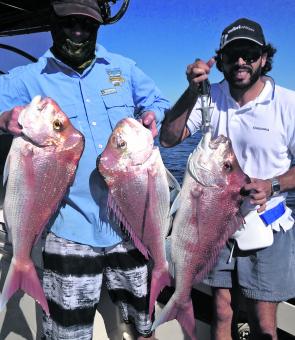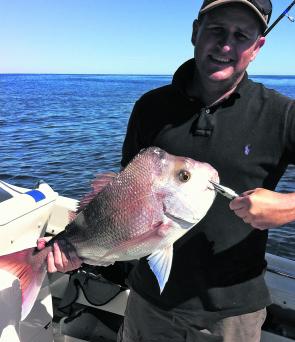Floatlining is fast becoming the preferred way to fish for larger snapper and other reef species. It’s an extremely effective way to fish, and has been underused for a long time. It’s also versatile, working just as well mixed in a berley trail as it does drifting towards a school of surface feeding tuna, and it doesn’t have to be complicated either.
Larger fish normally work their way up into a berley trail to feed or work the outer areas of the reef, leaving the smaller fish to work closer to cover. It’s these canny, bigger fish that you want to entice, so you want as natural a presentation as possible.
That’s where floatlining comes in – this technique is the most effective method of presenting bait naturally, enticing those large, wary predators to the hook. It’s the presentation of the bait, rather than the bait itself, that makes all the difference. The bait wafts slowly and naturally, and is therefore more tempting to the fish. Unlike a big, heavy lead hurtling towards the bottom at breakneck speed, floatlining doesn’t spook the fish anywhere near as often as other methods do. Smaller, food-obsessed fish may not be put off by a big lead with a bait spinning above it, but an older, wiser fish may well think twice before approaching.
Floatlining can be accomplished by using a single, double or treble hook rig, depending on what you need to cover your bait. For instance, if you are lucky enough to have big pilchards, you may decide to use a gang of hooks, or you could use two hooks in a snell configuration for whole squid and suchlike.
Just don’t fall into the trap of taking the word ‘floatlining’ literally! A more accurate name for this technique would be ‘slow sinking’. You want your bait to get down to where the fish are, and for that you need to take the current strength and depth into consideration (a slow to medium current is best for floatlining). You may need to use a small weight to help your bait fall at the same rate the berley does. The rule of thumb is this: if you’re not getting a bite you’re not amongst the fish, so you need to add or subtract weight accordingly.
There are a couple of ways that you can floatline for snapper. One way is to continually let out line by stripping line from the reel, wait for it to sink to the desired depth and then repeat the process. Alternatively you can simply let out a measured amount of line to the depth you think you should be targeting.
This floatlining method works better with baitrunner-style reels because you can control the drop by using the drag. Of course, you can use spin reels and overheads provided you have a measureable depth marked on your line. Lines like Pioneer Palladium braid are great because they’re colour coded at 10m intervals. Alternatively, you could tie a mark on the line at certain intervals to let you know when you’re getting close to the depth. A fluorocarbon leader running off either braid or mono main line will enhance the presentation of the bait and not spook the big predators.
The choice of line is entirely up to the individual angler. Some anglers like mono because it’s stretchy and forgiving, and any older, more educated fish are presumably less likely to smell a rat. However, I prefer braid as my main line because the lack of stretch allows me to get a full feel for everything the fish is doing. Braid is probably the best option to start out with if you’re new to this style of fishing.
There are a number of options to set up the rig. You can either run the sinker directly onto the hooks or set the sinker back up the line, allowing the bait to float naturally. I can tell you with confidence that either method will work if the balance of weight to current is right. The key is to use as little weight as possible, just enough to keep your bait heading down slowly towards the reef. When fishing depths of 20-40m you may only need up to a size 4 ball sinker in current but if you are out over 70m you can expect to use anything from a 4 ball sinker through to an ounce, and in some circumstances far more.
Snapper and other large predators have particularly hard mouths that need a strong hook to ensure a solid hook-up. Circle hooks are the first choice of many anglers, and I certainly prefer the security that they offer. I have found Mustad and Tru-Turn hooks to be ideal for preparing ganged or snelled rigs. When the fish takes the bait and turns, these hooks effortlessly push into the fish’s lip. There’s no need for the angler to strike – the fish will usually hook itself. At most, a slow lift is all that’s needed to set a circle hook.
So if you’re after a better class of fish, try floatlining and start fooling those big, wary knobbies.
Reads: 4204
A more accurate name for floatlining would be ‘slow sinking’.

Floatlining doesn’t spook the fish anywhere near as often as other methods do, which is perfect for targeting big snapper!

Large snapper will work their way up into a berley trail leaving the smaller fish closer to cover. It’s these canny, bigger fish that you want to entice, so you want as natural a presentation as possible.

Floatlining is a true tried and preferred method for catching snapper.




